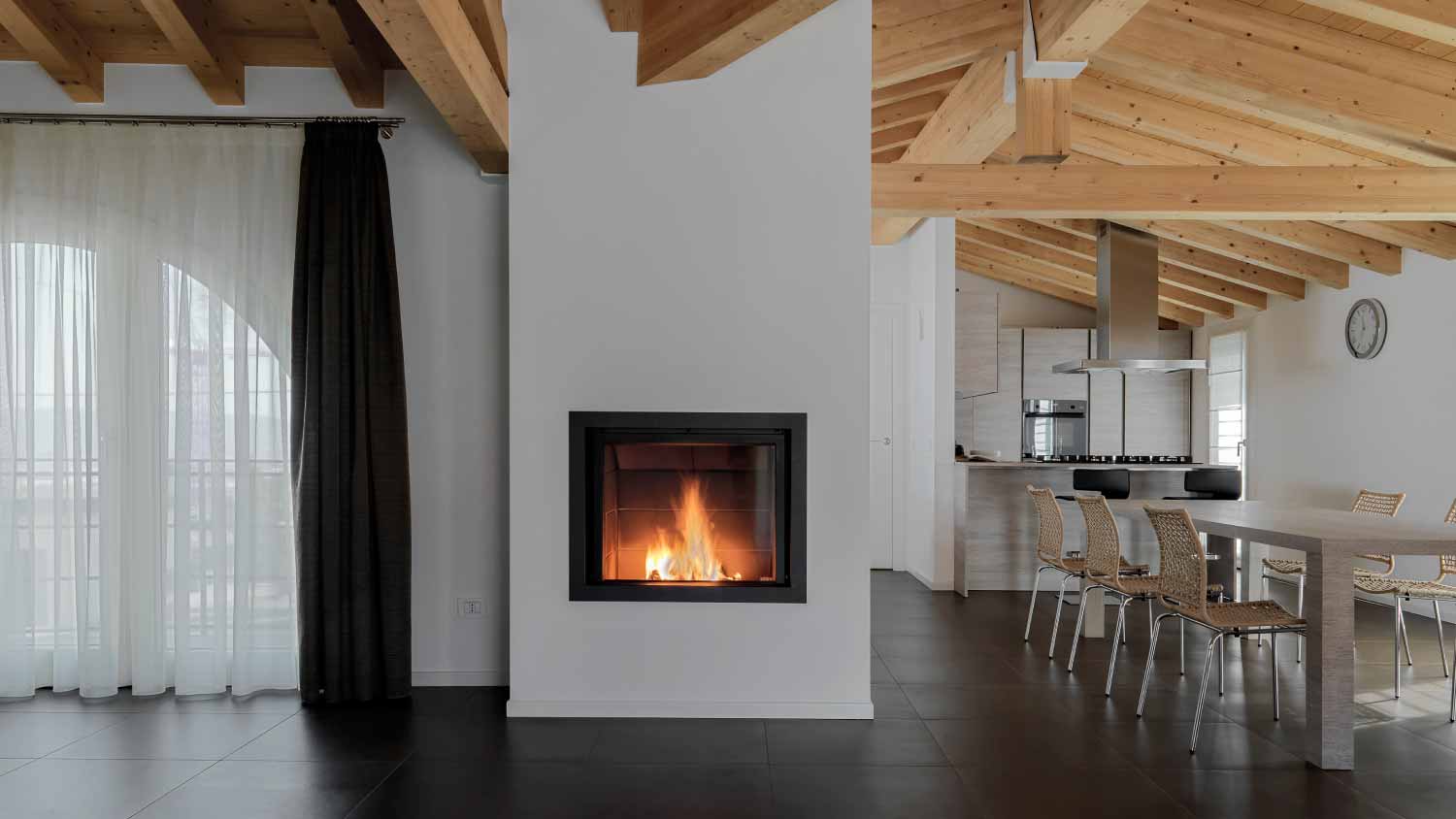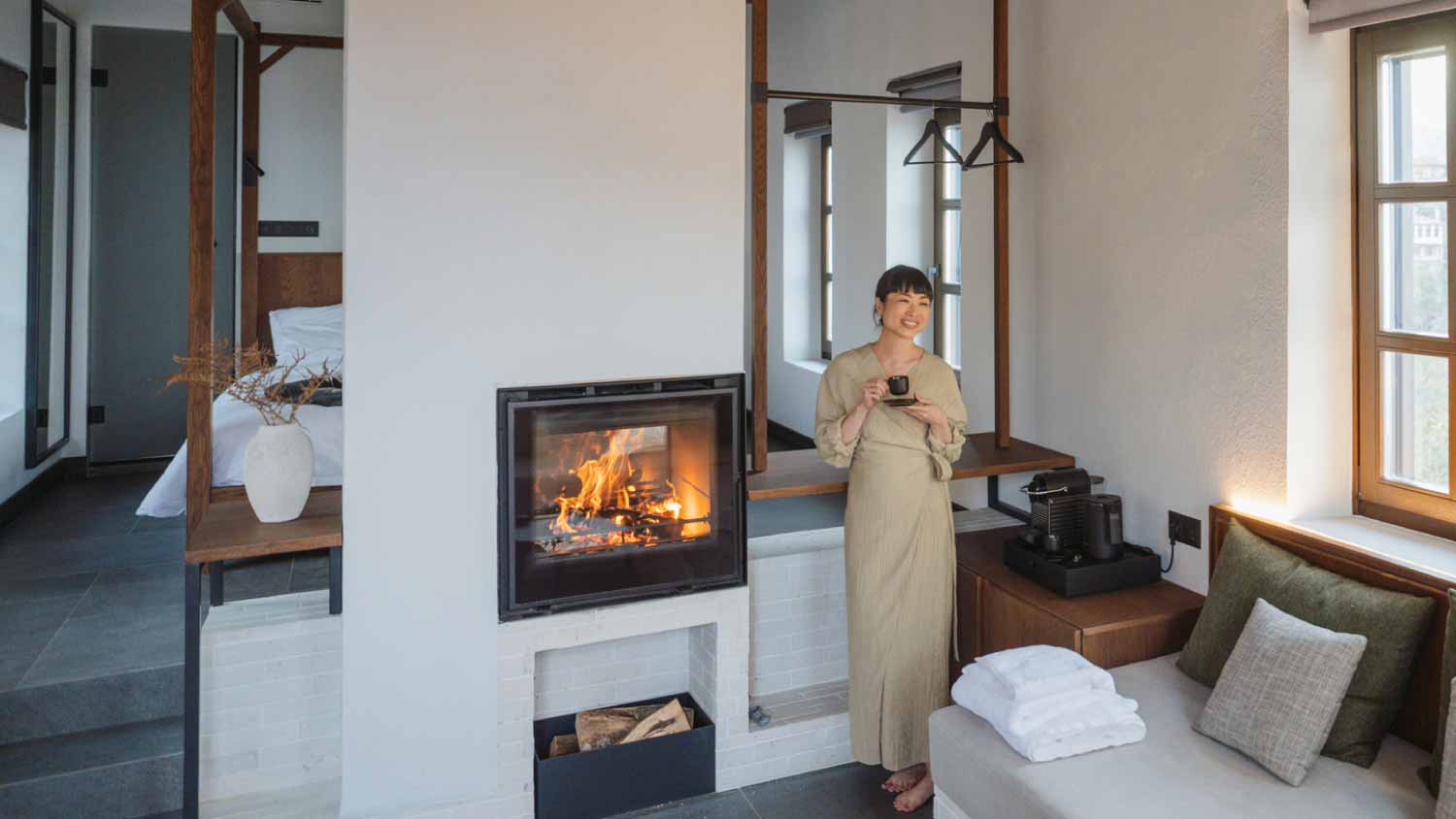
A fireplace remodel cost depends on the extent of the remodel and the materials you choose. Use this guide to calculate your costs and budget accordingly.
Ventless fireplaces burn fuel efficiently, but emit some exhaust gases into the home
Ventless gas fireplaces don’t require a chimney and offer an easier installation process, making them less costly.
A ventless gas fireplace offers better energy efficiency with no heat loss, and they have an aesthetic appeal.
Some disadvantages of ventless gas fireplaces include indoor air quality concerns, the potential for moisture buildup, and oxygen depletion.
Fireplaces have long been a cherished feature of homes, providing warmth, ambiance, and a cozy gathering spot for family and friends. Traditional fireplaces require venting to the outside, but ventless gas fireplaces have gained popularity as a convenient alternative. However, there are both pros and cons of ventless gas fireplaces that you should weigh before buying.
A ventless fireplace, also known as a vent-free or unvented fireplace, is a heating appliance designed to operate without a chimney or flue. Unlike traditional fireplaces that require a vent to expel combustion byproducts, ventless fireplaces use innovative technology to burn fuel efficiently. They also emit very small amounts of exhaust gases directly into the living space.
These fireplaces typically run on natural gas or liquid propane and are available in various styles, including wall-mounted, free-standing, and built-in models.

Let’s start by addressing some of the advantages of ventless fireplaces.
Ventless fireplaces do not need a chimney or external venting, making them easier and less expensive to install compared to traditional fireplaces. They can be placed virtually anywhere in the home, offering versatility in design and allowing you to add a fireplace to rooms without the need for major renovations.
Ventless fireplaces boast high energy efficiency because they do not lose heat through a chimney. All the heat produced is radiated into your room, resulting in reduced energy consumption and lower heating costs.
With a ventless fireplace, all the heat stays inside your room, ensuring efficient and effective heating without drafts or cold spots, which is common with traditional fireplaces.
Ventless fireplaces offer a beautiful and realistic flame, adding ambiance and charm to any living space. They come in various designs and styles, allowing you to choose a fireplace that complements your decor.
Since ventless fireplaces use gas as their fuel source, there’s no need to store wood, eliminating the hassle of stocking, hauling, and cleaning up after using wood logs.
Ventless fireplaces range from $300 to $1,500 on average. Vented models can cost $3,500 or more. With traditional vented fireplaces, you need a chimney and a flue to give the smoke a place to go. These aren’t budget-friendly additions to your home. If your fireplace doesn’t have a vent, you don’t have to pay extra during installation for a chimney or inspection of the chimney.
Chimneys also require periodic cleaning by professionals. A chimney sweep costs $250 on average (but prices can reach up to $400), so you’ll be saving money there, as well.
There are also some disadvantages that come with ventless fireplaces that are important to keep top of mind.
One of the main criticisms of ventless fireplaces is their impact on indoor air quality. Although they are designed to burn cleanly and efficiently, some people may be sensitive to the minimal emissions, especially those with respiratory issues or allergies.
Ventless fireplaces produce water vapor as a byproduct of combustion. In poorly ventilated areas, this can lead to excess moisture buildup, potentially causing mold and mildew issues. Your fireplace installer can give you information on how to decrease moisture problems during their visit, so don’t forget to ask.
Ventless fireplaces consume oxygen for combustion, and if used in a small, tightly sealed room without proper ventilation, they can lead to oxygen depletion. Adequate room ventilation is essential for safe operation.
Are ventless fireplaces safe? Ventless fireplaces are great for supplemental heating, but shouldn’t be the primary heat source for your entire home. Extended use can result in increased moisture levels and compromised indoor air quality.
Ventless fireplaces are limited to natural gas or propane as fuel sources. If these are unavailable or expensive in your area, the operating costs may become a significant concern.
If you’re unsure if a ventless versus vented fireplace is the right fit for your home, you can always contact a gas fireplace specialist near you for some insight. In the meantime, the following considerations can also help you make a decision.
If you have a small, well-ventilated room that could benefit from supplemental heat and ambiance, a ventless fireplace is a solid solution. However, if your home lacks proper ventilation or is tightly sealed, you might want to consider other options due to potential air quality and oxygen depletion concerns.
If anyone in your household has respiratory issues or allergies, a ventless fireplace may not be the best choice. Prioritize indoor air quality and consult with a professional if you have concerns.
If you want a decorative focal point that provides occasional warmth and ambiance, a ventless fireplace could be an excellent addition. However, if you rely heavily on a fireplace as your only heating source during cold weather, you may want to consider other options.
Before investing in a ventless fireplace, ensure that natural gas or propane is readily available and reasonably priced in your area. High fuel costs can diminish the cost effectiveness of a ventless fireplace.
To use a ventless fireplace safely, it's essential to follow all manufacturer guidelines, maintain proper ventilation, and install carbon monoxide detectors in your home. If you don’t feel confident that you can adhere to these safety guidelines, then a ventless fireplace may not be right for you.
From average costs to expert advice, get all the answers you need to get your job done.

A fireplace remodel cost depends on the extent of the remodel and the materials you choose. Use this guide to calculate your costs and budget accordingly.

The average cost to remove a fireplace is $4,500, but your overall cost will depend on the type of fireplace, its condition, and other factors.

Before installing a gas fireplace insert, it’s important to understand the various cost factors. Here’s how much an average gas fireplace insert costs.

The right wood-burning stove can efficiently warm your space and make it cozy and inviting. Weigh the pros and cons of seven types of wood-burning fireplaces.

Wondering if ventless fireplaces are safe? As long as you follow the proper installation techniques and have safeguards in place, you can use them without worry.

If you’re preparing to add the beauty and warmth of a new fireplace, here are the brick or stone fireplace questions to ask surrounding their installation.